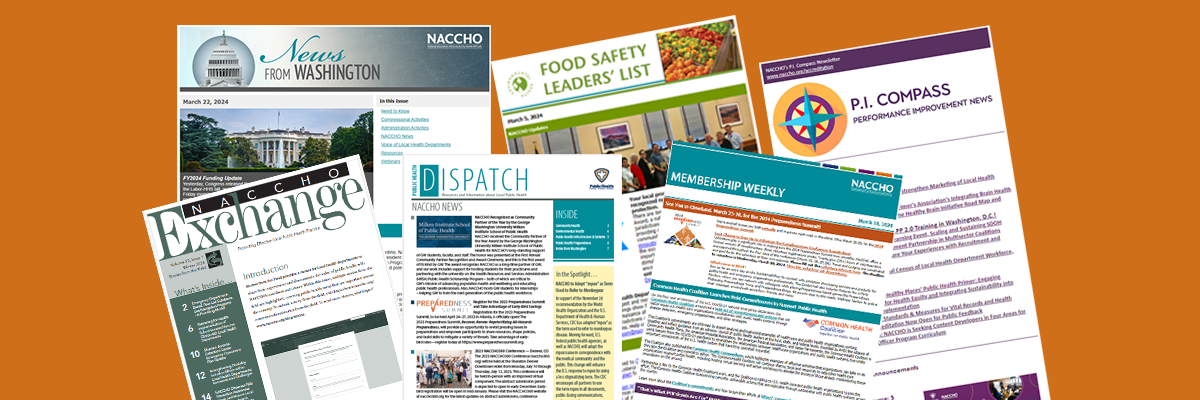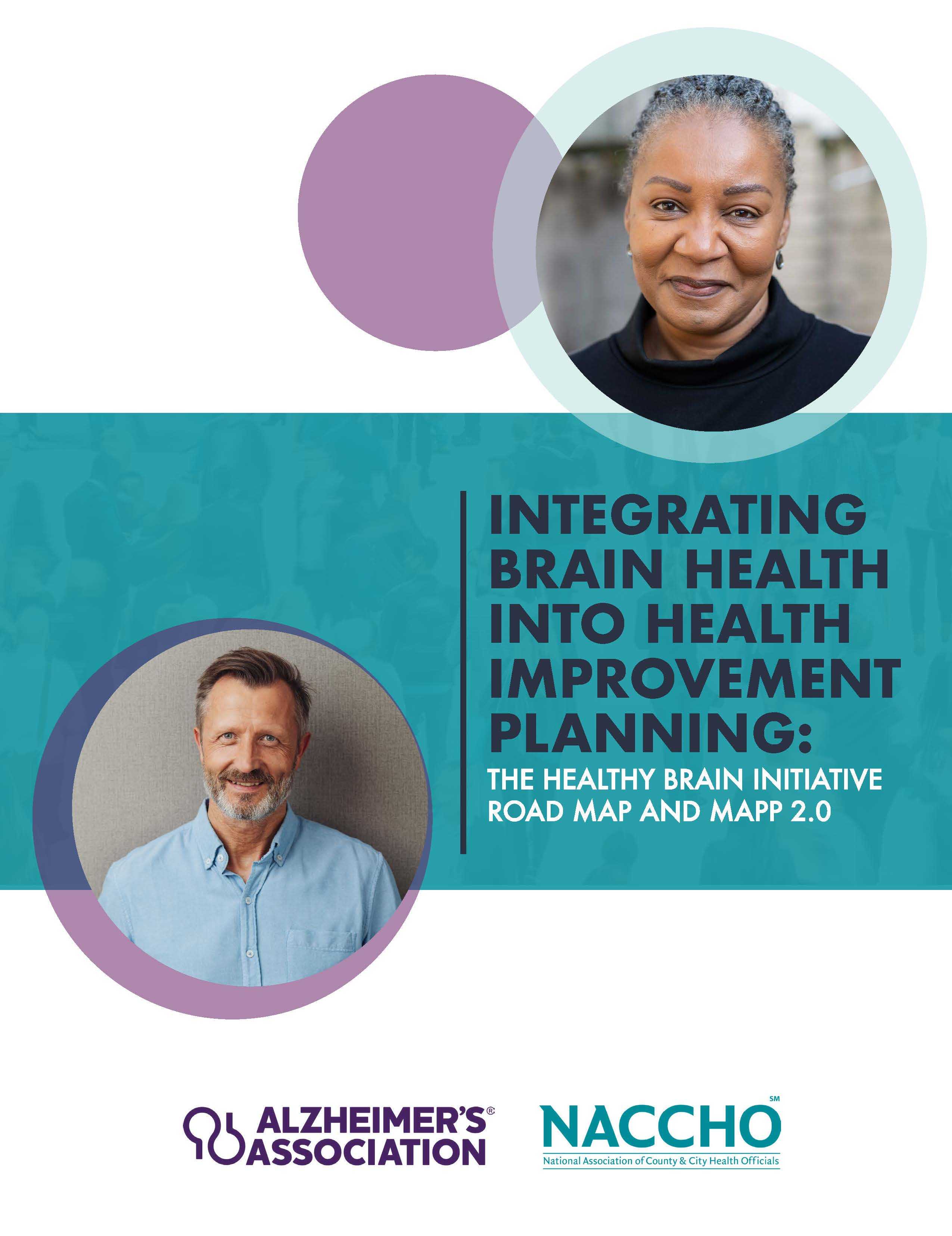Popular Categories
Project Public Health Ready: A Tool for Improving Statewide Preparedness
A hurricane is fast approaching your region. How will evacuation and sheltering procedures work when your neighbors are all affected,...
Jan 22, 2015 | Rachel Schulman
Supplemental Ebola Funding for State and Local Health Departments
The outbreak in West Africa represents the largest Ebola Virus Disease (EVD) outbreak in history. While there have only been a few...
Jan 20, 2015 | Katie Dwyer
FEMA Introduces New Data Visualization Tool
A new interactive tool from the Federal Emergency Management Agency (FEMA) makes the process of searching for currently available...
Jan 14, 2015 | Katie Regan
Resource Mobilization and Utilization in an Emergency: Pinal County Public Health...
Increasing infectious disease threats mean health departments face increasing resource constraints. To see how local health...
Jan 07, 2015 | Guest Author
NACCHO Preparedness Brief: Year in Review
Happy holidays and happy new year to all of our members and readers! NACCHO’s preparedness staff would like to take a few moments to...
Dec 30, 2014 | Rachel Schulman
Fighting Infectious Disease in the United States: A New Report Looks at Our...
On December 18, 2014, the Trust for America’s Health, in conjunction with the Robert Wood Johnson Foundation, released its report...
Dec 23, 2014 | Guest Author
NACCHO Releases National Assessment on Disability Awareness in Local Health...
“National Assessment of the Knowledge, Awareness, and Inclusion of People with Disabilities in Local Health Departments’...
Dec 22, 2014 | Katie Regan
“Back2School” Immunization Clinic runs smoothly using Incident Command System
Working with state and local partners, Dakota County Public Health Department vaccinated 120 students entering 7th through 12th grade...
Dec 19, 2014 | Alyson Jordan
New Evidence-Based Planning Guidance for Patient Decontamination Released
Every day large quantities of hazardous materials are made, transported, stored, and used in communities throughout the United States....
Dec 19, 2014 | Justin Snair
Project Public Health Ready: A Tool for Improving Statewide PreparednessA hurricane is fast approaching your region. How will evacuation and sheltering procedures work when your neighbors are all affected, too? The local health department reports a suspected case of Ebola. Who at the state level should be notified first? Quick, effective responses to public health emergencies require planning, coordination, and practice among and between […] Jan 22, 2015 | Rachel Schulman |
Supplemental Ebola Funding for State and Local Health DepartmentsThe outbreak in West Africa represents the largest Ebola Virus Disease (EVD) outbreak in history. While there have only been a few cases in the United States, and the risk of an outbreak in the United States is low, the public health and healthcare communities have, and continue to, implement steps to prevent, prepare for, […] Jan 20, 2015 | Katie Dwyer |
FEMA Introduces New Data Visualization ToolA new interactive tool from the Federal Emergency Management Agency (FEMA) makes the process of searching for currently available grant data much more accessible and transparent. The new tool allows users to see a visual representation of the agency’s federal grant data in the categories of fire, preparedness, mitigation, and public assistance. Users simply select […] Jan 14, 2015 | Katie Regan |
Resource Mobilization and Utilization in an Emergency: Pinal County Public Health Services DistrictIncreasing infectious disease threats mean health departments face increasing resource constraints. To see how local health departments are managing different pressures, NACCHO Policy Scholar, Pooja Kothari, spoke with Kore Redden, the Public Health Emergency Preparedness and Response Administrator for Pinal County Public Health Services District (AZ). Redden discusses how Pinal County is... Jan 07, 2015 | Guest Author |
NACCHO Preparedness Brief: Year in ReviewHappy holidays and happy new year to all of our members and readers! NACCHO’s preparedness staff would like to take a few moments to reflect upon the past year and the issues of greatest importance to our readership. As we look back at the top ten most popular featured articles, some strong themes emerge regarding […] Dec 30, 2014 | Rachel Schulman |
Fighting Infectious Disease in the United States: A New Report Looks at Our ReadinessOn December 18, 2014, the Trust for America’s Health, in conjunction with the Robert Wood Johnson Foundation, released its report Outbreaks: Protecting Americans from Infectious Diseases 2014. The report looks at states across ten criteria related to fighting infectious disease such as increasing or maintaining funding, vaccinating at least half of the population six months […] Dec 23, 2014 | Guest Author |
NACCHO Releases National Assessment on Disability Awareness in Local Health Departments“National Assessment of the Knowledge, Awareness, and Inclusion of People with Disabilities in Local Health Departments’ Public Health Practices,” a new NACCHO research brief, analyzes a survey of local health departments conducted to explore and better understand the ways they include people with disabilities in their programs, products, and services. Approximately 56 million... Dec 22, 2014 | Katie Regan |
“Back2School” Immunization Clinic runs smoothly using Incident Command SystemWorking with state and local partners, Dakota County Public Health Department vaccinated 120 students entering 7th through 12th grade to comply with updated Minnesota School Immunization Laws. The clinic was organized utilizing the Incident Command System and demonstrated emergency preparedness capabilities. Dec 19, 2014 | Alyson Jordan |
New Evidence-Based Planning Guidance for Patient Decontamination ReleasedEvery day large quantities of hazardous materials are made, transported, stored, and used in communities throughout the United States. With nearly 25 million people living near chemical facilities in the nation, many could be exposed to chemicals following a catastrophic incident. To protect health and save lives in such catastrophic incidents, first responders, medical providers, […] Dec 19, 2014 | Justin Snair |

Subscribe Today
Sign Up for the E-mail Digests
Create an account or login to MyNACCHO and go to "My Subscriptions."
SUBSCRIBE NOWPARTNER ARTICLES
More NACCHO Blogs
Check out all the NACCHO blogs.




